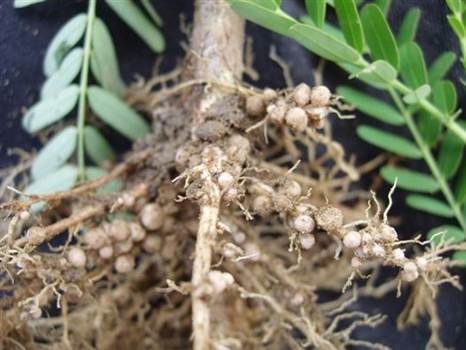揭示植物辨别细菌善恶的手段

在最近的《Nature》杂志上,一个国际科学家团队发表文章,揭示了豆类植物,其中包括重要的农业物种(如白三叶),怎样区分有益细菌和有害细菌的分子机理。
他们发现,豆科植物是根据入侵细胞表面上的胞外多糖来辨别细菌的属性。研究团队成员Ronson教授说,胞外多糖,连同其它碳水化合物,被发现存在于所有生物的细胞表面上。“细菌表面具有多种多样的多糖,其中大部分多糖都对细胞与细胞间的相互作用、免疫逃避、发病机理、生物膜的形成和生态区间的繁衍至关重要,”他说。
该团队在实验中使用了包括植物和微生物遗传学、生物化学和碳水化合物化学等方面的跨学科方法,这个团队的研究人员已经确定了第一个已知的植物上胞外多糖受体的基因,称为Epr3。他们发现由Epr3基因编码的一种膜受体激酶可以直接与胞外多糖结合,并调节有益细菌通过植物表皮细胞层的通道。
“现在,我们已经确定了使宿主生物体区分友好的细菌和那些致病细菌的关键机制,这开辟了令人振奋的新的跨多个学科领域的研究道路,”Ronson教授说。
植物、动物和人类与微生物的关系是近来发展迅速的新研究领域,人们对其中机理知之甚少,胞外多糖受体的鉴定可能从一个新的角度来理解多细胞生物和微生物之间的相互作用,他说。(来源:生物360)
Receptor-mediated exopolysaccharide perception controls bacterial infection
Abstract Surface polysaccharides are important for bacterial interactions with multicellular organisms, and some are virulence factors in pathogens. In the legume–rhizobium symbiosis, bacterial exopolysaccharides (EPS) are essential for the development of infected root nodules. We have identified a gene in Lotus japonicus, Epr3, encoding a receptor-like kinase that controls this infection. We show that epr3 mutants are defective in perception of purified EPS, and that EPR3 binds EPS directly and distinguishes compatible and incompatible EPS in bacterial competition studies. Expression of Epr3 in epidermal cells within the susceptible root zone shows that the protein is involved in bacterial entry, while rhizobial and plant mutant studies suggest that Epr3regulates bacterial passage through the plant’s epidermal cell layer. Finally, we show that Epr3expression is inducible and dependent on host perception of bacterial nodulation (Nod) factors. Plant–bacterial compatibility and bacterial access to legume roots is thus regulated by a two-stage mechanism involving sequential receptor-mediated recognition of Nod factor and EPS signals.
原文链接:http://www.nature.com/nature/journal/vaop/ncurrent/full/nature14611.html

